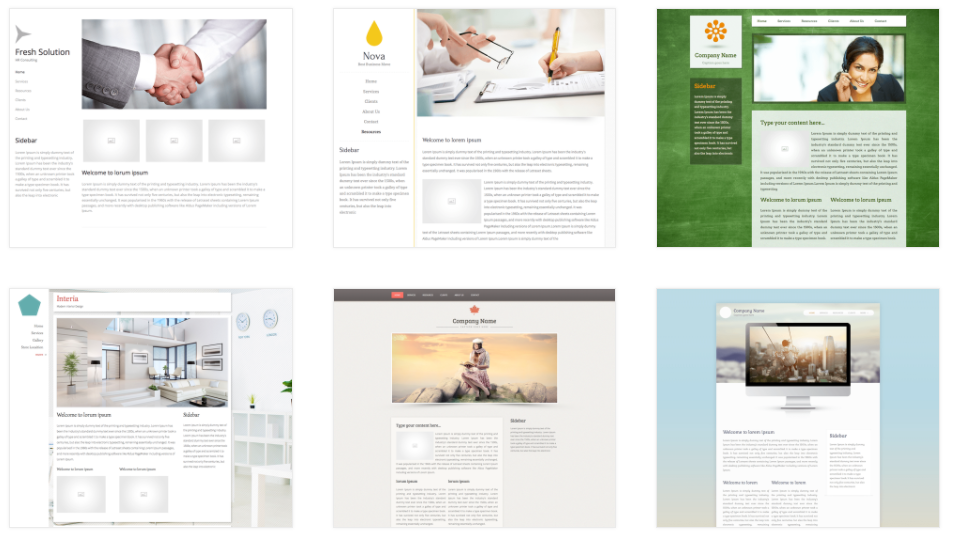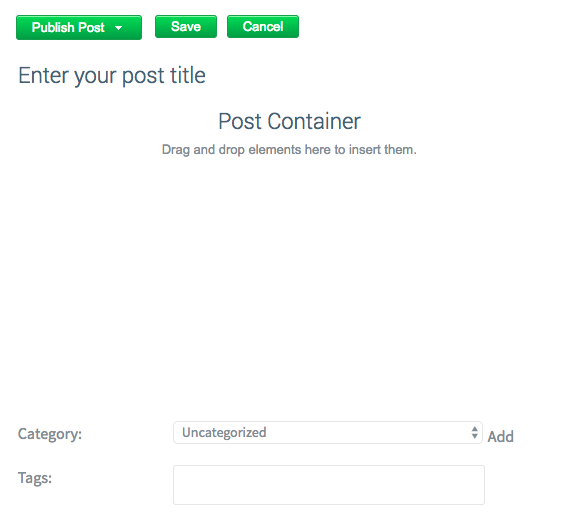
The Zoho Corporation was founded in California in 1996, but its web publishing service has only been around since 2012. As a technology company, its main focus has been on creating business apps, but their foray into the website builder market has provided first-time website builders with the ability to build a simple website on their own. Is the feature worth your time, or should you look to more well-known services like Wix?
We created an account on Zoho to test out their website builder. Here’s what we learned…
#Zoho is a lesson in the dos and do-not-dos of website building. Click To Tweet
- Pros and Cons
- Getting Started
- Ease of Use
- Template Selection
- Blogging with Zoho
- eCommerce with Zoho
- Additional Features
- Zoho Premium
- Conclusion
Pros and Cons
- Pros
- Cons
- The website editor software offered by Zoho is really clean and straightforward to use. Users will be hard-pressed to make mistakes, but if they do, Zoho’s builder offers a roll back feature, guaranteeing a fool-proof experience.
- Zoho doesn’t prevent users from adding their own HTML/CSS and is one of the few website builders that enables users to create customized forms. This shouldn’t be surprising to those who use Zoho’s other services, considering it is their specialty.
- Zoho has a really outdated selection of themes and templates. There are very few options that would be considered even passable in a Web 2.0 world. This is surprising considering how well Zoho’s competitors have adapted to the new standard for internet aesthetic.
- The blogging platform on Zoho is lacking even the most basic of features. It is nothing more than a text box and offers nothing in the way of in-window word processing or layout editing.
- Zoho’s eCommerce platform is useless. Users can add products with a link to a PayPal payment page, but that’s literally where the shopping features end. It might as well be pulled.
Getting Started
Signing up for Zoho is as simple as entering a username and password. That’s it! Once created, you will be prompted to select a theme and begin editing it. This is one of the smoothest sign-up processes we have ever seen.
Two follow-up emails proceed to account creation. One is an email confirmation link and the other provides a beginner’s guide and walk-through videos to help you on your way.
Ease of Use
Zoho is easy to navigate, clean, and intuitive. The process of creating a website is as simple as dragging elements and widgets from a toolbar that rests atop your website preview and dropping it onto your canvas. You can select from elements, forms, apps, and commerce.
If you are a more experienced designer, you can take advantage of the HTML/CSS editor to customize your website even further. It is a feature that isn’t offered by many website builders, which generally prefer keeping their platforms closed and proprietary.
Once you begin working on your website, you may make changes that you want to roll back. Zoho features the ability to revert to a previous version of your site design.
Template Selection

Zoho features a catalog of nearly one hundred themes. The problem is that most – if not all – of them are extremely outdated and clunky. Zoho’s templates look like they have not been updated since the turn of the century. And despite our belief that simpler is better, Zoho is perhaps a bit too simple to exemplify today’s standards of minimalism.
All the themes have the option of a header and a sidebar. You can customize elements such as the menu style, links, and headings. This is a great way to tweak a theme to make it feel more like an original design. Occasionally you’ll find some arbitrary limit on an element such as the font size, but overall the themes are quite flexible.
[box type=”alert”]Zoho’s themes are responsive, so they will properly adapt to any sized screen on any device.[/box]
Blogging with Zoho
 Setting up and managing your blog on Zoho is as easy as designing your website. We managed to add a page optimized for blogging and content management in just two clicks.
Setting up and managing your blog on Zoho is as easy as designing your website. We managed to add a page optimized for blogging and content management in just two clicks.
One nice feature of the blogging platform is that it allows you to import old blogs from Blogger or WordPress. A commenting and moderation system is also included. Unfortunately, that’s where the positives end.
Zoho offers the most barebones publishing system we have ever encountered. Don’t expect anything more than a field to enter text. Unlike pretty much every other website builder we have used, the blogging platform is basically useless. The burden is on the user to create a readable blog outside of the platform, presumably in a word processor or visual HTML editor.
eCommerce with Zoho

Zoho offers an eCommerce solution to users for an additional one dollar every month. It’s so basic, however, that all it allows you to do is add products and link the price to PayPal. You cannot enable on-site checkouts, customize email receipts, or add product variations. Zoho would be a terrible choice for any eCommerce business. Shopify has nothing to worry about.
Additional Features
Zoho is one of the few website builders that will allow you to customize your forms. The range of fields you can choose from is substantial and may be a bit intimidating for inexperienced designers. All submissions are saved in a database so you can retrieve the information should you accidentally delete your email notification. This is a feature that is not common to many of the other website builders you can use, but it’s extremely useful for beginners. You don’t have to set up your own independent database to collect and store visitor details.
Similarly, being able to integrate your newsletter signup with Zoho’s own newsletter service or a third party such as MailChimp is a big bonus. Many website builders neglect this function which is frustrating as it’s clearly a very important part of any website. By including it in their offering Zoho demonstrates that they really do try to cater to their users’ needs.
Zoho Premium
A premium account on Zoho costs $4.00 per month, but domain names are not included in the price. Users should expect to pay around $15.00 per year for a custom domain name. Additional add-on features like the $1.00 per month eCommerce platform are also available, but none are recommended.
Conclusion
The only option we would recommend Zoho for is a simple landing page for a business. And that’s only if you don’t want to bother looking into other website builder options. Zoho’s themes are archaic, the blogging platform is weak, and the eCommerce solution is useless.
Thankfully there are many other excellent platforms available for your consideration. We recommend taking a look at our Top Website Builders page to learn more about your options.




